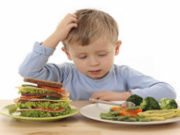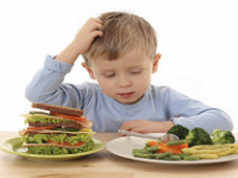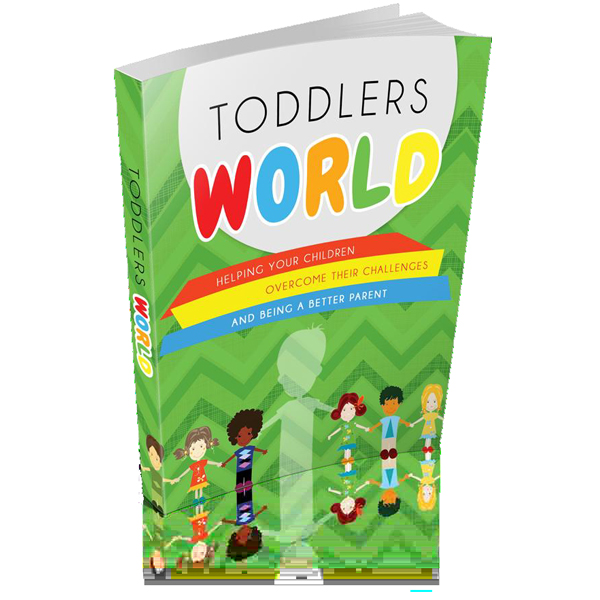Hmmm. So, is your picky eater really a picky eater or perhaps they have been onto something all the while.
Read the complete list of myths, and see if any on the list are familiar. Share those from your personal list in the comments.
Iron deficiency is a greater risk among very young children: Data from the Centers for Disease Control and Prevention, in Atlanta, reveal that 9 percent of toddlers between the ages of 1 and 2 are deficient in iron. That figure drops to about 3 percent for kids 3 to 5 and 2 percent for 6- to 11-year-olds. Toddlers can certainly get plenty of iron from their diet without consuming red meat — good news, because many are natural vegetarians and meat can be hard for young children to chew, says Kathleen Zelman, M.P.H., a registered dietitian and Atlanta-based spokesperson for the American Dietetic Association. Though red meat contains an easily absorbed form of iron, your toddler can meet his mineral needs by eating fortified cereals and breads, dried fruits such as raisins, spinach, molasses, beans, lentils, eggs, certain fish, and the dark meat of poultry.
Kids under 10 should get at least ten milligrams of iron daily — an amount that is easily fulfilled with one cup of Cheerios (eight milligrams) and two small boxes of raisins (two milligrams). If you still think your child isn’t getting enough, talk with your pediatrician about a multivitamin supplement with iron.
Myth 2: A child who skips veggies will miss key vitamins and minerals
Lots of kids shun vegetables and still do just fine. One reason may be that they have developed an affinity for sweet-tasting fruits, which can be a good nutritional substitute while kids slowly learn to appreciate (or at least tolerate) greens like broccoli and spinach. “Fruits are comparable in vitamin and fiber content,” says Jo Ann Hattner, M.P.H., a registered dietitian and pediatric-nutrition specialist in Palo Alto, California. “Think in terms of five total servings a day, whether it’s from fruit or veggies.”
If your child won’t touch carrots, for example, offer apricots and cantaloupe to make up for the vitamin A and carotenoids he’d miss. Strawberries or oranges can stand in for spinach to help meet folic acid needs. Bananas are a good alternative to potatoes as a source of potassium, and citrus fruits can substitute for broccoli to cover vitamin C requirements. “But even if your child doesn’t routinely eat vegetables, it’s important to continue to offer them,” says Hattner. “Veggies are packed with not only important vitamins and minerals but also health-promoting phytochemicals. Eventually, he’ll come to accept them.”
Myth 3: Dairy products make a child’s cold worse
It’s just not true that dairy products increase mucus production or thicken nasal secretions. “The cold virus itself causes mucus production in the nose and the back of the throat,” explains Kathleen J. Motil, M.D., Ph.D., an assistant professor of pediatrics at the USDA/ARS Children’s Nutrition Research Center at Baylor College of Medicine, in Houston. “Dairy products simply coat the lining of the back of the throat, making it feel funny.” You can continue to offer your child milk or other dairy products when she’s sick with a cold. If she won’t drink milk, don’t worry. Simply give her other liquids — water, juice, or chicken soup — until she feels better. Even if she doesn’t have much of an appetite, it’s important that she get plenty to drink to ward off dehydration and keep mucus flowing through her nasal passages.
Myth 4: To prevent obesity, you should limit fat intake early on
Babies and toddlers need about 40 percent of their daily calories from fat because their brains and bodies are developing rapidly. “The growing brain has very special requirements for fatty acids and other components of fat,” Dr. Motil explains.
That’s why most experts recommend that kids under 2 drink whole milk rather than skim. Older children still need essential fatty acids in their diet for healthy skin, proper growth, the production of sex hormones, and vitamin absorption, but after the age of 2, getting 30 percent of their daily calories from fat is sufficient.
TO SEE THE OTHER 6 MYTHS, VISIT STACY COLINO AT PATERNTS.COM (CLICK HERE)



![[Video] This 2-Yr Old Tea Time With Dad is The Most Heart-Warming Thing Ever.](http://www.toddlernews.net/wp-content/uploads/2017/01/video-this-2-yr-old-tea-time-wit-2-180x135.jpg)


![[Video] Life For Kids With This Disability Is Challenging, Until This Life-Changing Hack](http://www.toddlernews.net/wp-content/uploads/2016/10/video-life-for-kids-with-this-di-180x135.jpg)
![[Video] How To Effectively Handle A Clingy Toddler.](http://www.toddlernews.net/wp-content/uploads/2016/09/video-how-to-effectively-handle-180x135.jpg)
![[Video] People Are Loving These 10 Value-Packed Facts About Toddlers.](http://www.toddlernews.net/wp-content/uploads/2016/09/video-people-are-loving-these-10-1-180x135.jpg)
![[Video] This 3-yr-old toddler Asked Her Four- Legged Fried to Do This And when He Does It’s The Cutest Thing.](http://www.toddlernews.net/wp-content/uploads/2016/08/video-this-3-yr-old-toddler-aske-180x135.jpg)


![[Video] You Will Laugh Yourself Silly When You See This Daring Toddler Escape.](http://www.toddlernews.net/wp-content/uploads/2016/07/video-you-will-laugh-yourself-si-180x135.jpg)

![[Shocking Report] How The NRA Has Your Toddler In The Crosshairs.](http://www.toddlernews.net/wp-content/uploads/2016/05/postnow-180x135.jpg)
![[Video] This Incredibly Exciting Audio Book Will Engage Your Toddler To Read Along.](http://www.toddlernews.net/wp-content/uploads/2016/05/video-the-incredibly-exciting-au-180x135.jpg)


![[Video] When This Dresser Accidentally Toppled On This 2-Yr-Old I Didn’t Think He Would Live…OMG!](http://www.toddlernews.net/wp-content/uploads/2017/01/video-when-this-dresser-accident-180x135.jpg)


![[Video] You Might Say That These Boisterous And Spirited Twin Tots Need A Little Dinner Table Etiquette (Lol)](http://www.toddlernews.net/wp-content/uploads/2016/04/video-you-might-say-that-these-b-180x135.jpg)


![[video] The Scary Truth About This Miracle Antidote Poisoning Your Toddler.](http://www.toddlernews.net/wp-content/uploads/2016/07/video-the-scary-truth-about-this-180x135.jpg)




![[video] The Scary Truth About This Miracle Antidote Poisoning Your Toddler.](http://www.toddlernews.net/wp-content/uploads/2016/07/video-the-scary-truth-about-this-238x178.jpg)




![[Video] This 2-Yr Old Tea Time With Dad is The Most Heart-Warming Thing Ever.](http://www.toddlernews.net/wp-content/uploads/2017/01/video-this-2-yr-old-tea-time-wit-2-100x75.jpg)
![[Video] When This Dresser Accidentally Toppled On This 2-Yr-Old I Didn’t Think He Would Live…OMG!](http://www.toddlernews.net/wp-content/uploads/2017/01/video-when-this-dresser-accident-100x75.jpg)

Facebook Comments Sync